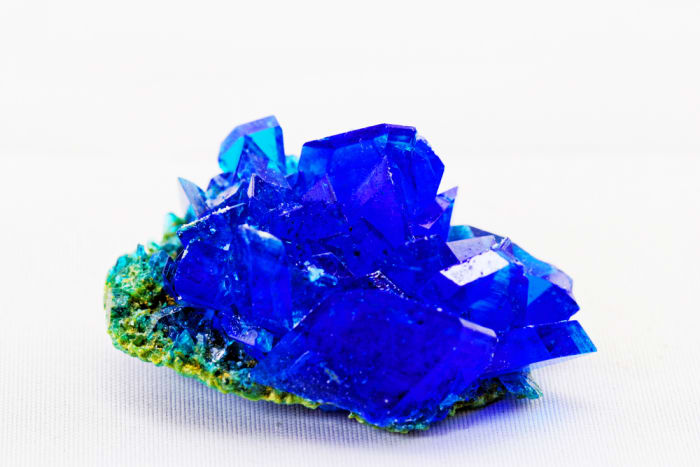How to make a crystal from copper sulfate
Chemical gems from copper sulfate
There are many simple and entertaining chemical experiments you can conduct with children. Start to learn about the magic world of crystals right now.
At home, you can grow crystals from almost all salts, but it’s best to start making them with technologically simple materials. These are kitchen salt, sugar, borax and copper sulfate. This can be used to make beautiful, large blue crystals. The process of making them is simple, but very interesting and educational. Our article will help you to learn step by step how to make copper sulfate crystals at home.

List of ingredients
Here what you'll need to start work on growing the crystals at home.
Copper sulfate
You can buy copper sulfate in any gardening store. It is sold in packets of 100 grams. This copper sulfate is light blue because of its low purity. Crystals made from it will be brighter.

Copper sulfate is also sold in special laboratories that sell reagents. From this copper sulfate, dark blue crystals are grown, which look like precious stones.
Container for the solution
Use a glass vessel, as other materials enter into a chemical reaction with the solution. A jar with a wide neck, with a volume of 0.5 liters, will be ideal. It is categorically forbidden to use it for food after the experiment.
Base for crystallization
For the base, use a thin woolen thread of a blue or black color. The adult crystal is semi-transparent, and the base should not spoil the result. An alternative is a copper wire of small diameter, polished with sandpaper beforehand.
Water
When copper sulfate from a hardware store is used for the experiment, boiled water should be used. If the copper sulfate is of high purity, the solution is made with distilled water.
Protective equipment
The sulfate is toxic, and you should not work with it without gloves. Young children should wear medical masks.
Pencil or stick to hold the base
Use it for hanging the thread with future crystal.
Transparent nail polish
To preserve crystals.
Disposable plastic spoon
Attention! Only conduct the experiment under adult supervision. At the end of the process, wash your hands under running water. You should wash them thoroughly. You must not taste the crystal or powder. If copper sulfate gets into children’s eyes, help them by rinsing their eyes with a large amount of water.
How to make a crystal: work stages
Solution of high concentration
In water of a temperature of around 80 degrees, add copper sulfate, one spoonful at a time. Constantly stir the liquid, so the powder dissolves completely. It’s important to maintain a constant water temperature, for which you can use a water or sand bath. If the copper sulfate stops dissolving and begins settling at the bottom, the solution is ready. On average, 200 grams will be used with 300 ml of water.

Crystal seeding
Place the container with the hot solution on a cooling surface and wait for it to cool down to room temperature. This is so the small crystals settle. Strain the solution through a layer of gauze, examine it and take the largest crystal with a correct form. This will be used as a crystal seeding to continue the experiment.
Environment for growing the crystal
Heat the strained solution again in a water bath, once more bringing the content of the copper sulfate to oversaturated. If the resulting sediment does not dissolve, repeat the straining. Tie the seeding and place it in the jar so the thread is vertical, without touching the bottom or walls of the container. You can achieve this with a pencil: tie the thread in the middle, and fix the pencil on the neck, for example with plasticine. Here you’ll find detailed instructions and scientific description of this experiment.
Growth of the crystal
Cover the container with a fabric handkerchief and leave it for seven days in a motionless state. This is essential for the crystal to start to form. One week later, you will see that the thread is covered in small crystals, one millimeter and more in size, and the seeding has increased in size by around 1 cm. The larger the crystal of copper sulfate becomes, the faster it will grow. When the result is satisfactory, dry the crystal and cover with varnish. This will stop a white coating from forming and provide an additional shining effect.
In conducting the experiment, children will find an answer to the question: “why do crystals form”, and will happily make new discoveries.